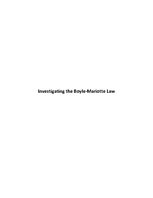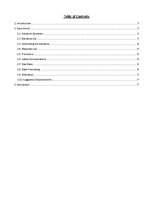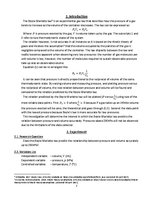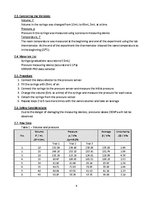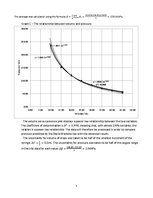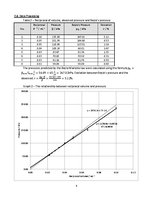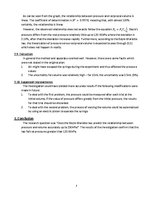| Nr. | Sadaļas nosaukums | Lpp. |
| 1. | Introduction | 3 |
| 2. | Experiment | 3 |
| 2.1. | Research Question | 3 |
| 2.2. | Variables List | 3 |
| 2.3. | Controlling the Variables | 4 |
| 2.4. | Materials List | 4 |
| 2.5. | Procedure | 4 |
| 2.6. | Safety Considerations | 4 |
| 2.7. | Raw Data | 4 |
| 2.8. | Data Processing | 6 |
| 2.9. | Evaluation | 7 |
| 2.10. | Suggested Improvements | 7 |
| 3. | Conclusion | 7 |
2.9. Evaluation
In general the method and apparatus worked well. However, there were some faults which were not stated in the original plan:
1. Air might have escaped the syringe during the experiment and thus affected the pressure values.
2. The uncertainty for volume was relatively high – for 10mL the uncertainty was 0.5mL (5%).
2.10. Suggested Improvements
The investigation could have yielded more accurate results if the following modifications were made in future:
1. To deal with the first problem, the pressure could be measured after each trial at the initial volume; if the value of pressure differs greatly from the initial pressure, the results for that trial should be discarded.
2. To deal with the second problem, the process of varying the volume could be automatized by using an electric piston to operate the syringe.
3. Conclusion
The research question was “Does the Boyle-Mariotte law predict the relationship between pressure and volume accurately up to 230kPa?” The results of the investigation confirm that the law fails at pressures greater than 120.86kPa.…
Laboratorijas darbs fizikā (angliski): Boila-Mariotta likums.

